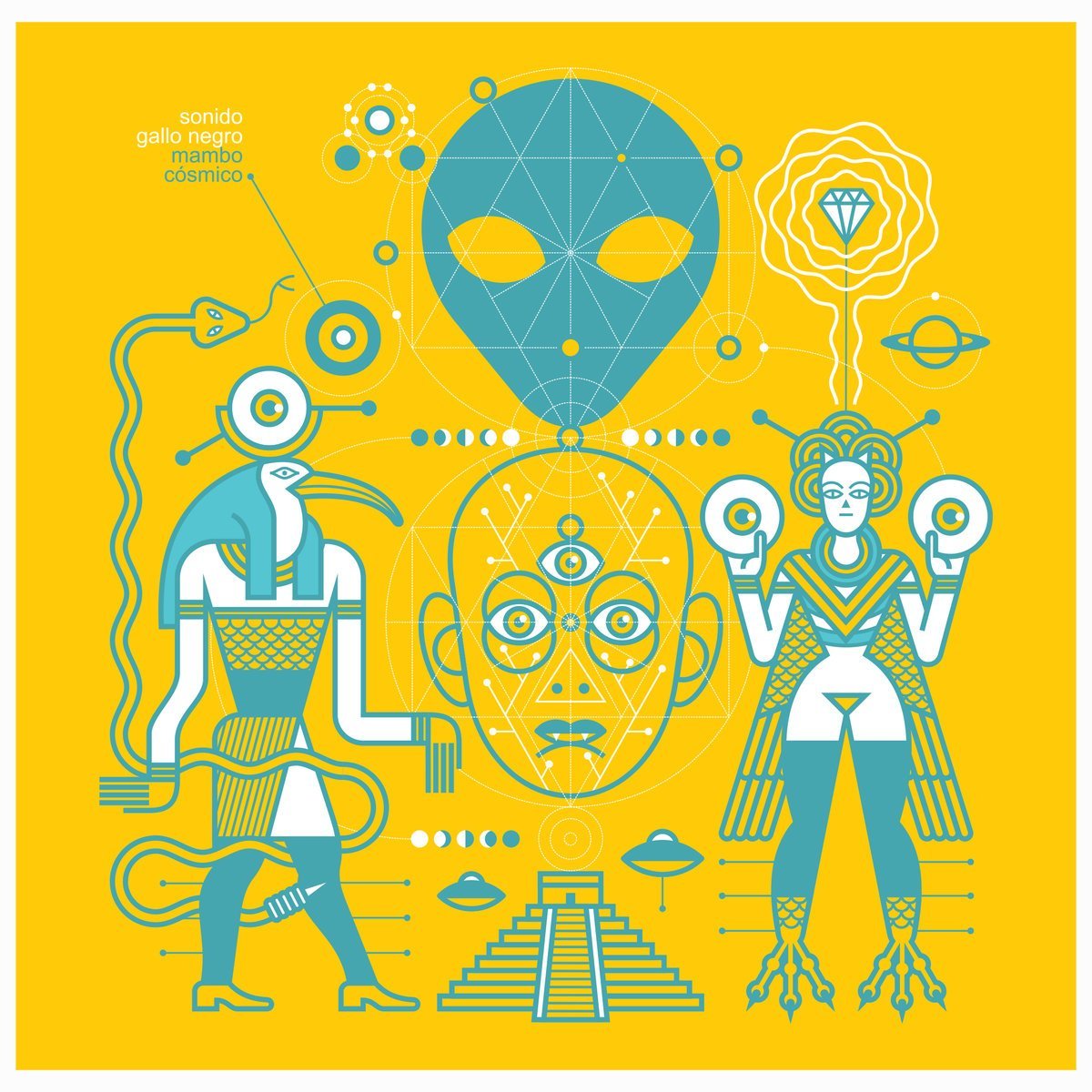Mexico City’s Sonido Gallo Negro returns with their third album and keeps the exploration of Amazonian psychedelic music coming. Alongside the exhilarating cumbia sounds, they experiment with different sounds and textures such as mambo, cha-cha, porro and danzón; all of which add to the growing sound and reputation the instrumental nine-piece has earned through their mesmerising live shows and previous releases.
Mambo Cosmico sets out to create a sonic composition that takes you on a global musical voyage by bringing influences from Africa, The Middle East, and more familiar Mexican and Latin American sounds. Filled with frenetic, red-hot, kaleidoscopic melodies and vibrations that mesmerise the listener into an almost otherworldly state, the band beat out eleven rhythmic pulses.
The fast-paced, swirling title track “Mambo Cosmico” – with its distinctive psychedelic keyboard sound – kicks off the album, and it’s an upbeat mambo that has a hallucinogenic twist. Rolling into track two, we slow down a little for the band’s interpretation of a porro track from a 1950s Colombian musician, Lucho Bermudez. Porros, originally played using only drums, hand clapping and voices, were played by indigenous gaiteros bands, and later were enriched with African rhythms.
Of the eleven tracks on the album, nine are group originals, and it’s on these that you can hear the band’s new cultural and historical influences permeating into their traditional sound. Sonido’s navigational charts point towards a concurrence of sound and imagination with the Middle East, as you can see from the album cover, which shows a picture of the Egyptian God of music, Thot. In the tracks “Cumbia Ishtar” and “Mambo Egipcio” you can hear those influences and will feel yourself floating into the Pyramids of Cairo on a magic cumbia flying carpet.
Sonido Gallo Negro deliver a great album, and with their distinctive Mexican and Latin American psychedelic sounds they do not disappoint with many cumbias, porros and danzóns, however, it is the new influences that create a fresh element, with subtle nods to Middle Eastern and African music and sounds. Enjoy the trip.


